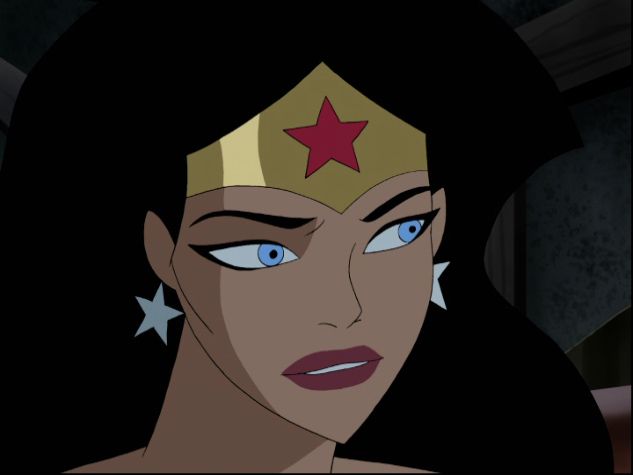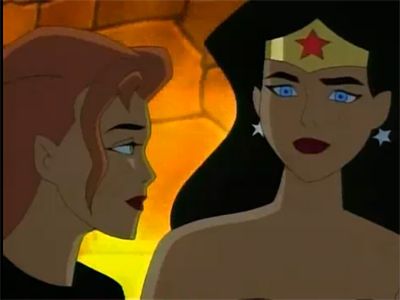@IMDbThe Phantom – The Metaphor That WalksBefore we begin let’s have a look at
The Phantom himself. A man who dresses entirely in purple spandex, is incredibly particulate about his jewelry, wears heavy eye make-up and is very good with both children and animals. Suffice to say he is not your stereotypical representation of XY. Then to up the gay-ante he lives alone in a skull shaped caved together with his close confidante and manservant (I’m thinking that’s a synonym for glamorous gay loverboy), Guran. So turning this story on its gay edge really will not be a chore or a pain, in fact it basically jumps at you.
The Phantom – a lover and a metaphorThis is the story of The Phantom (
Billy Zane;
Titanic, Orlando) and his lover/partner Guran who for many years have enjoyed a beautiful relationship together in the relaxed Bengallan jungle. However the legacy of the Phantom is becoming more and more of an issue as this loving same-sex relationship is unable to produce the heir Kit Walker (aka the Phantom) is in dire need of to perpetuate the legend of the Ghost Who Walks. Kit’s subconscious is actually haunting him to such an degree that he has begun to see his late father berating him for his mistakes as well as urging him to reproduce. Harsh really, sometimes not even the death of our parents will stop them from nagging and condemning our lifestyles. At this point Diana Palmer, an old College friend of Kit’s shows up and a solution to appears to take form to Kit’s problem, but more on that later.
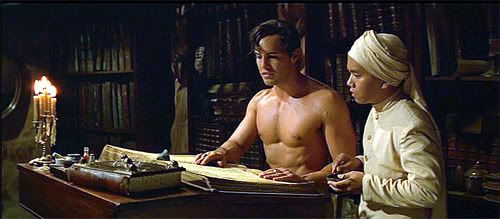 [Two men - One cave]
[Two men - One cave]Kit and Guran really is a sweet couple that gives us several scenes of gorgeous subtext. It begins in their first scene together which is of the hurt/comfort variety. The Phantom has been stabbed and Guran is cleaning the wound, unaffected by the purple-clad man’s whining, but meanwhile showing tenderness and affection in his care. Their relationship continues on this tender note as Guran also shows concern as Kit is talking to himself (or the manifestation of his dead father).
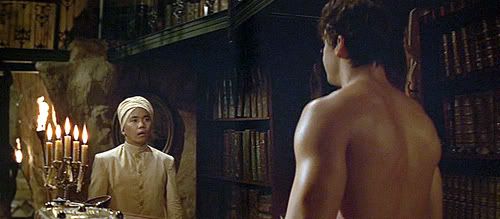
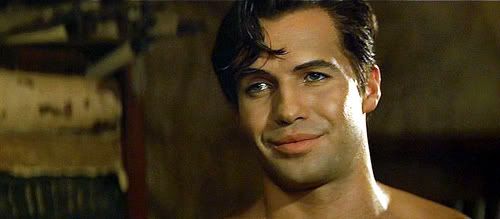
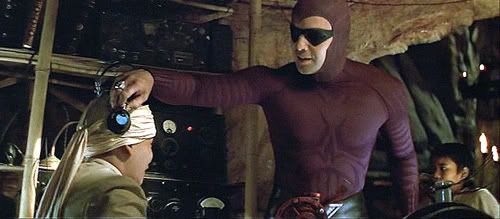
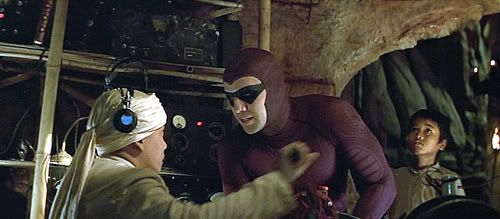 [Every-day intimacy and affection]
[Every-day intimacy and affection]Early on in the movie there is also a scene in which the Phantom has just rescued Diana from her kidnappers and is bringing the Captain of the Jungle Patrol up to speed. The Captain is about to lit a match and start smoking his pipe, but is quickly interrupted by Guran who with a strained smile informs him that smoking is not allowed in the Skull Cave. After which the Phantom and Guran share a moment of lingering eye-contact and Guran gives a slightly apologetic smile that is return with an affectionate one from Kit. Clearly Guran have no problems setting the rules of the cave and neither does Kit. You are allowed to go
awww.
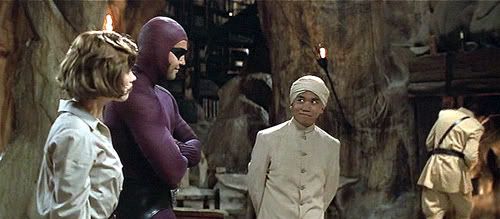 [Guran sets the rules]
[Guran sets the rules]In addition to his relationship with Guran, the Phantom also works as a metaphor for the US military policy of
“don’t ask, don’t tell”. The Captain of the Jungle Patrol is very much aware of the Phantom and his contribution to upholding the laws of the district, yet will not acknowledge the man’s presence officially. Something that is embodied in a scene where the Phantom gets into the Captain’s house through one of the windows and the two have a small business chat. Once it is time for the Phantom to leave he first moves towards the door only to be stopped by the Captain who tells him he better leave the same way he came,
“he was having enough troubles pretending he didn’t exist as it were”. So it is okay for the purple hero to risk his life, but the military will not officially acknowledge him or his “lifestyle”. Incredibly topical (though just as hidden) in a movie premiering in 1996.
Diana PalmerHowever it is not only Kit and Guran who likes to engage in some homosexual activities, Diana Palmer (
Kristy Swanson;
Buffy the Vampire Slayer, 3way) sets the subtle gaydar a-pinging right from the start by showing us a sharp contrast to the accepted XX norm (by 1930s standards at least). She makes an entrance by returning from an adventure in the Yukon, with a brash attitude she jumps out of her own car and breezes into her uncle’s party, dressed in a cocky khaki suit (trousers and tie included) and a stylish beret. The first thing she is met by is her mother who insists Jimmy Wells will be thrilled to see Diana again, at which Diana gives her uncle a look of defeat only to turn her back and walk away. Jimmy is indeed pleased to see her and plants a kiss on her lips, a kiss she frowns off and shows more interest in her baloney sandwich (I think she must be a
meat-er)). As the evening then progresses she is invited to her uncle’s little smoke/drink gathering in his library, where she alongside her uncle and two other big wigs (obviously older white men) discuss the problem of Xander Drax. This says a lot about her, but also her relationship to her uncle, a man who clearly accepts her for who she is and has no problem assimilating her into the “boys club”.
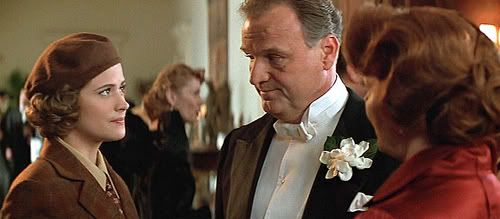 [Will she ever understand it's not a phase?]
[Will she ever understand it's not a phase?]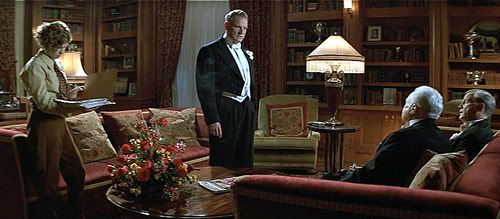 Sala – and dealing with repressed emotions
Sala – and dealing with repressed emotionsAs Diana takes a trip to the Bengalla jungle to research the Singh Brotherhood her plane is captured by a gang of all-female pilots lead by Sala (
Catherine Zeta-Jones;
Ocean's Twelve, The Mask of Zorro) who was deployed to kidnap her. The first meeting of the two women sends sparks flying. Sala is by nature an overtly sexual being and oozes sexuality all over the place. Diana shows a clear interest in the female pilot and curiosity makes her bold enough to pull off Sala’s helmet/goggles to get a better look at the brunette. Sala end up knocking Diana out and the scene that follows might not be subtext in its more traditional form, but it is nevertheless much entertainment to be had in watching Diana draped over Sala’s shoulders like a sack of potatoes as the villain dumps her at their “headquarter”.
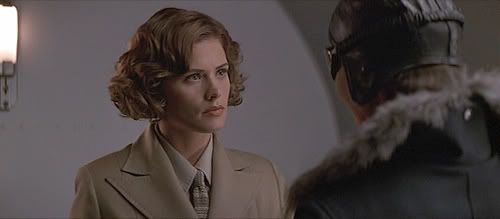
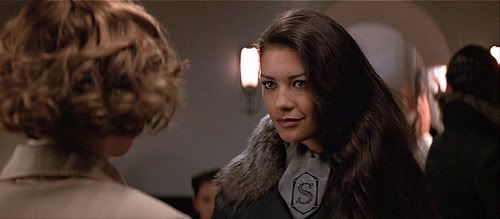 [Love at first sight?]
[Love at first sight?]
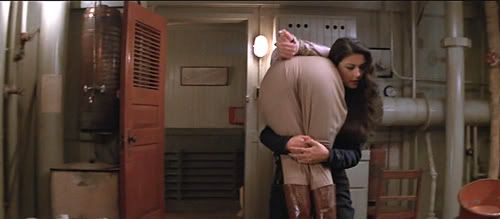
The tension between the two continues and Sala goes on to comment,
“Pretty, in a spoiled rich kid kinda way” and once Diana gives them lip adds with a content smile,
“Feisty too”. Yet at this point it appears as if Diana is having more of an interest in Sala (judging by the interested looks of longing she keeps sending her way) than the other way around. Despite being the leader of an all female gang of pilot-criminals Sala doesn’t appear to quite “get” the same-sex attraction. Clearly she is feeling some of it towards Diana, but instead of acknowledging and accepting her feelings she takes out her insecurities and self-loathing through her promiscuous image and criminal behaviour. She’s angry at the world and herself for not accepting and is trying to get back at both.
[Tension - wii haz it]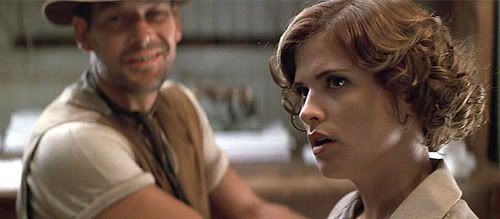
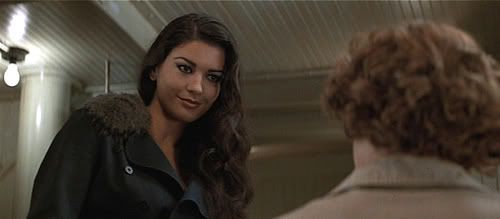
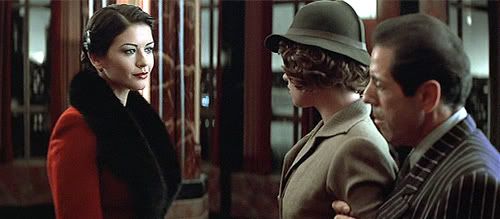
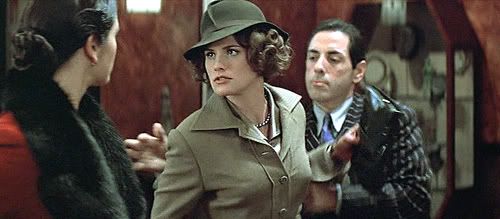
It is first as Sala meets Diana that she begins to realize there are other possibilities. The one scene that stands out is during the latter half of the movie Sala taunts Diana by telling her Kit is probably long dead. At which Diana snaps and asks her;
Diana: Why are you so mean? Don’t you care about anything?
Sala: Like what?
Diana: You figure it out.
Diana gives her an intense look before looking away. Sala’s smile of insolence quickly fades and she looks almost haunted by Diana’s words.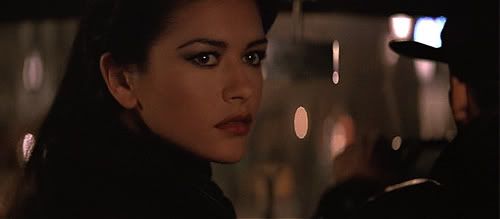
Once in the Singh Brotherhood’s nest Diana is attacked by one of the pirates who first give Sala a warning/taunting look before touching Diana’s face and proclaiming,
“This one’s mine”. Sala loses it and attacks him with a well-placed knee to the groin. The scene then continues and ends on Sala and Diana sharing a private moment where Sala appears to give her a butt slap and tells her,
“I think us girls should stay together”. Diana looks a little shocked, but gladly agrees. It appears as if Diana truly got to her, reminded her of the possibilities available once you stop running away from your own feelings. For the rest of the film Sala is incredibly protective of Diana and tries to defend her whenever possible. Also as the twosome are about to get launched out of the Singh nest in a torpedo tube Sala protectively takes a firm hold of Diana’s hips as the enter the cramped area of the tube. Incredibly cute.
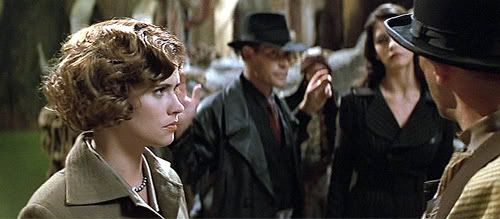
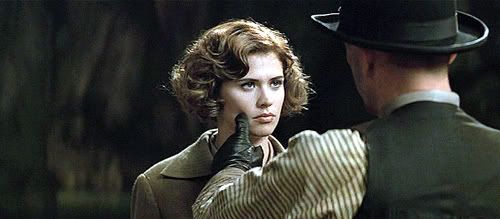
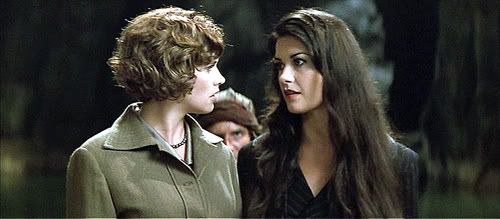
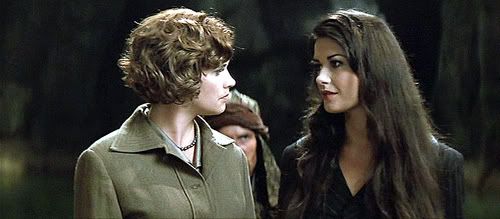 Kit and Diana – BFFs sharing more than memories?
Kit and Diana – BFFs sharing more than memories?Right from the first scene the two have together we are made aware that the Phantom aka Kit and Diana have a past. However it is not until the plot of the movie is transferred back to New York City that the extent of the relation is discovered, Kit and Diana were apparently very close friends during College, before Kit had to return to Bengalla to take up his father’s spandex. Kit is thrilled to see her again, but Diana is still feeling betrayed by his sudden unexplained disappearance and is reluctant to let him back into her life. We are never fully made aware of the true nature of their College friendship, but it does appear as if the two were BFFs who quite possibly experimented in heterosexual behaviour with one another.
From the moment Kit saw Diana again it appeared as if his thought process was kicked into gear, part of him genuinely happy to see an old friend, the other part seeing a solution to his and Guran’s child problem. What better way than to create a child together with your lesbian BFF.
However there is a small amount of jealousy involved and every time that Diana and Kit get a little too close Guran is there to make sure no one steps over the line as old memories flare. Fortunately they are both too secure in their own current sexualities for that to ever happen, the only affection they share is a chaste kiss at the end of the movie as Diana is about to leave Kit and the jungle behind and go off with Sala. Previous to this scene Kit had also explained to her about the intricacies of the Phantomic legacy and how he needed a son to continue on his work. Diana clearly understood his hidden meaning and does show an interest in Kit’s subtle suggestion of starting a rainbow family. However she is not nearly ready to take such a huge step, especially not as she has just entered a new relationship with the provocative and somewhat unpredictable Sala.
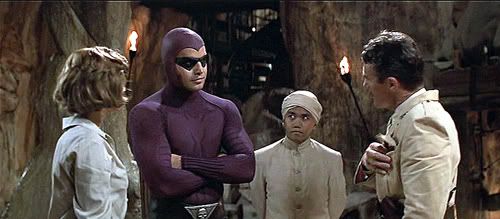 [A cautious Guran]The Plot
[A cautious Guran]The PlotOn a larger scale this is a story of the Singh Brotherhood and Xander Drax (
Treat Williams;
Hair) who are representing the uglier sides of heteronormativity, while preaching hatred and intolerance. The three skulls of Tuganda (that the movie is all about) representing the power of information and indirectly media. It’s not a coincidence that Drax wants to buy the leading New York newspaper from Diana’s uncle, neither is the torture of the “tattling” librarian. The librarian in this case being a metaphor for gays in media, as Drax pokes his eyes out what he does is a subtle reference to crippling queer visibility through “passive” censorship. It also shows that he is threatened by this alternative way of life, by the “erotic minorities”.
To further go with this oppression angle we have the scene at the Museum of History where as two of the skulls come together radiate one blue and one red ray that together show the location of the third skull. The colours in this case, red and blue are accepted indicators of female and male and the coming together of the two is one big metaphor for heterosexuality. As Xander is wielding the power of the skulls he worships their potential and proclaims that this is a dawn of a new era aka the destruction of “abnormalities”. It’s no wonder Diana and Kit look at each other in horror, this man represents a most deadly threat towards their identities and the lives they are leading.
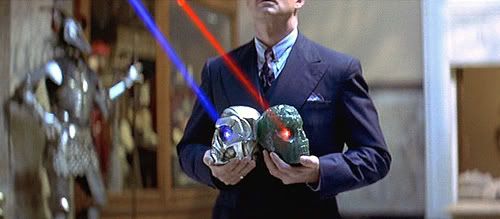
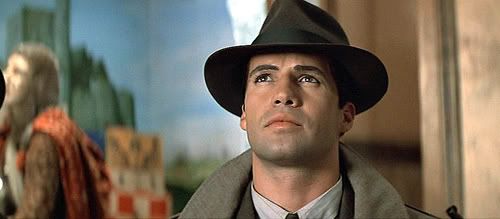
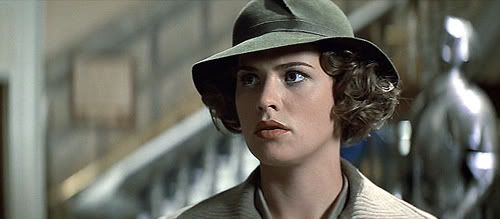
The climax off the movie then takes place in the Singh Brotherhood’s secret nest which is blown to smithereens as the Phantom successfully vanquishes Drax by turning the tables on him and using the power of the skulls for his own benefit - it’s a fun message from the subtexter’s point of view. It’s also a gay crusade where tolerance and love wins out. Hatred and the brotherhood of intolerance is dead, long live liberty and love.
The SummaryThe movie tells the story of same-sex love and relationships. It touches on the intolerance of heteronormativity as well as dealing with some of the problems faced by homosexuals such as creating a family and dealing with your own family’s reaction to your way of life. At the same time it is a beautiful saga where love does win out and where the grotesque aspects of normality is destroyed by using “their” own tools against “them” (and yes I am biased cause I love doing it). Meanwhile it briefly touches upon the matter of visibility and uses the Phantom as a metaphor for “don’t ask, don’t tell”. But ultimately it sends a message that fighting for what you believe in is worth it, and the only way for the GLBT community to be strong is to take a stand side by side.
If for no other reason the movie is recommended for its final scene where we see Diana and Sala take off together and fly into the horizon. How many movies have you watched where the heroine leaves the hero for the bad girl at the end?! It’s worth a watch, and I’m not just saying that because the Phantom is one of my favourite comic-book heroes.
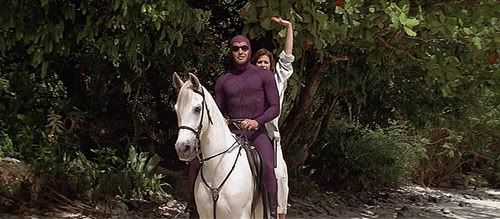
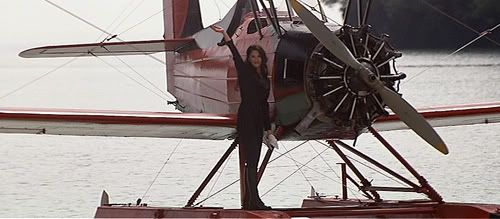
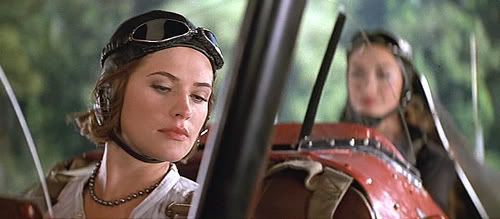
[Two women - One plane]
[In The Sun - but actually in a gay gay way]To sum it up;
“this is so gay” – old jungle saying.
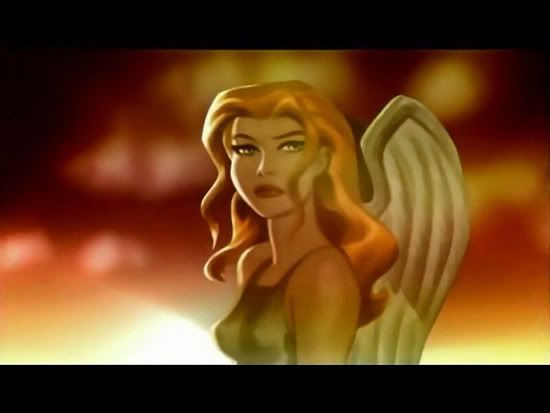
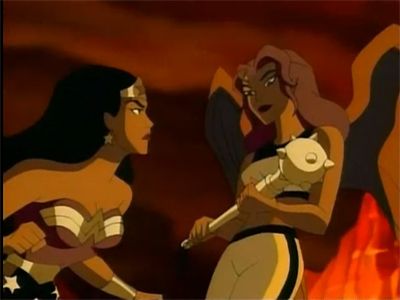
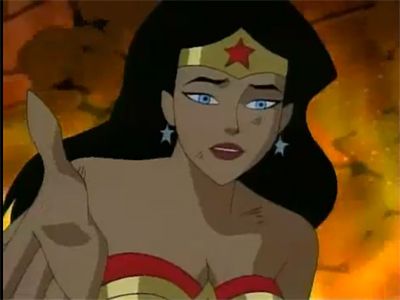
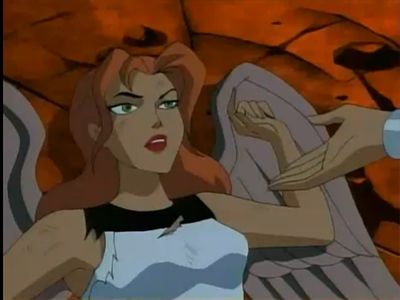
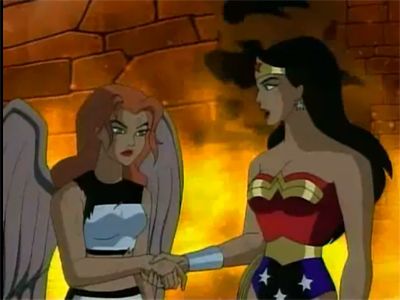
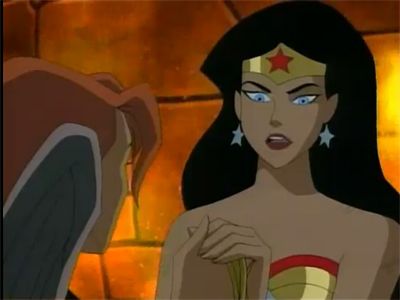
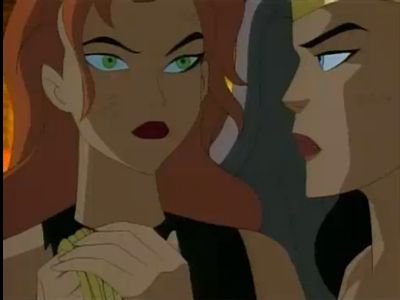
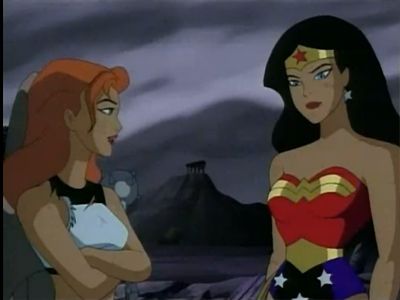 They might not be ready to put all their differences and past aside, but they do go together. And judging by Hawkgirl’s insecure body language (her arms across her chest, protecting her heart while enhancing the appearance of her bossom) there are issues to work on and miles to go, but there is no denying the compatibility.
They might not be ready to put all their differences and past aside, but they do go together. And judging by Hawkgirl’s insecure body language (her arms across her chest, protecting her heart while enhancing the appearance of her bossom) there are issues to work on and miles to go, but there is no denying the compatibility.